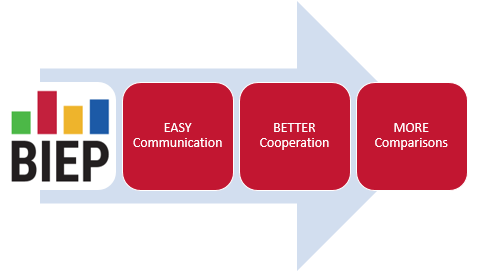 BIEP stands for Benchmarking Information Exchange Project. It's a flexible form of cooperation between Supreme audit institutions (SAIs). BIEP is a tool that gives encouragement to share ideas and experiences based on the same methodology for a particular area. Compared to other forms of cooperative audits - parallel audit, joint audit and coordinated audit, it is much easier to share data and information within BIEP. BIEP contributes to saving time and audit costs.
BIEP stands for Benchmarking Information Exchange Project. It's a flexible form of cooperation between Supreme audit institutions (SAIs). BIEP is a tool that gives encouragement to share ideas and experiences based on the same methodology for a particular area. Compared to other forms of cooperative audits - parallel audit, joint audit and coordinated audit, it is much easier to share data and information within BIEP. BIEP contributes to saving time and audit costs.
BIEP supports the principles of ISSAI 12 "The Value and Benefits of Supreme Audit Institutions - making a difference to the lives of citizens".
[ISSAI 12, principle 5, article 6]
[ISSAI 12, principle 6, article 2]
[ISSAI 12, principle 7, article 5]
 The main idea of BIEP is to compare key performance indicators (KPIs) and specific national conditions across various countries. Areas of comparison are not limited. The data and information exchange is based on the 3C principles: communication, cooperation and comparison. The 3C principles are an integral part of the vision of the next EUROSAI Congress and the subsequent EUROSAI Presidency. According to 3C principles BIEP contributes to EASY communication, BETTER cooperation and as a result of that there are MORE comparisons.
The main idea of BIEP is to compare key performance indicators (KPIs) and specific national conditions across various countries. Areas of comparison are not limited. The data and information exchange is based on the 3C principles: communication, cooperation and comparison. The 3C principles are an integral part of the vision of the next EUROSAI Congress and the subsequent EUROSAI Presidency. According to 3C principles BIEP contributes to EASY communication, BETTER cooperation and as a result of that there are MORE comparisons.
BIEP principles of cooperation are:
- SAI can suggest a new topic for benchmarking or SAI can choose any specified topic
- SAI can start to cooperate on it at any stage
- SAI can use already existing methodology or create a new one as well
- SAI can use the BIEP results for its own national reports upon approval of all cooperating SAIs on a particular topic
- SAI share the BIEP results and other documents in one place - on the EXTRANET